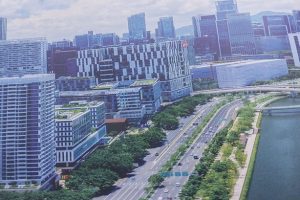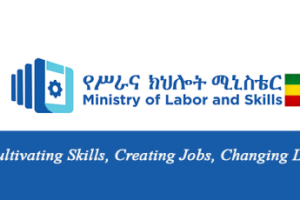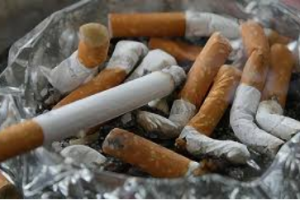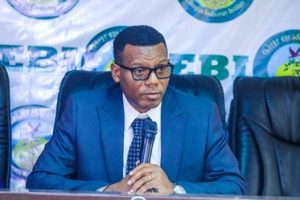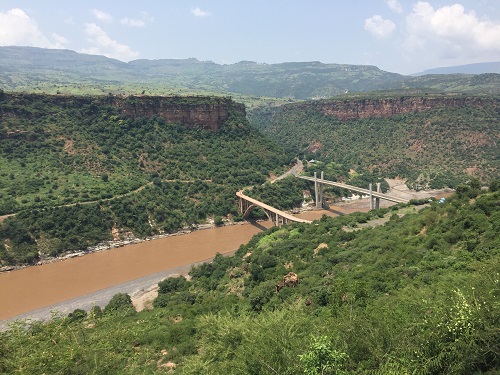
BY DARGIE KAHSAY
Last week, three governmental and non-governmental institutions, Ethiopian Ministry of Agriculture, Global Green Growth Institute and the Korea International Cooperation Agency (KOICA) launched a five year land rehabilitation program. The program mainly aims to rehabilitate affected areas mainly in forest coverage and protecting forest covered areas from further deforestation activities.
The program is planned to be implemented within three regional states, Amhara, Oromia and Sidama targeting deforested and affected areas, river basins mainly to develop water access and supporting the people at grassroots levels to develop their benefit from the forest industry. The rehabilitation project aims to rehabilitate over 13 thousand hectares of land within the three states, according to Global Green Growth Institute (GGGI) Ethiopia.
GGGI Ethiopia country representative, Gemedo Dale (PhD) during the launching program said that the joint program of MoA, GGGI and KOICA aims to rehabilitate over 13 thousand hectare of land affected by manmade and natural hazards with the goal of supporting the country’s efforts to build climate resilient green economy. The rehabilitation project targets both forest and landscape rehabilitation within the selected areas to be implemented with strict follow-up for its success.
Beyond the rehabilitation and reforestation program, the project aims to generate economic benefit for youth and women in the selected areas. By providing initial financial and technical supports to the youth and women, the project aims to develop the economic benefit of the youth and women from the forestry sector. KOICA allocated 9.6 million USD financial supports for the implementation of the project, according to GGGI.
Gemedo elaborated that the project’s main target is rehabilitating the affected landscapes and reforestation at the same time developing the economic benefit of the low-income people in the areas that the project is planned to be implemented. Dr. Gemedo stated that the project includes developing agricultural productivity and economization of forest industry.
North Showa Zone, Dejen area and the Blue Nile Basin areas in Amhara State and in the borders of Oromia and Sidama states areas are among the selected areas that the project has targeted its rehabilitation program. By focusing on the rehabilitation of the Blue Nile Basin areas, the project would help to the efforts of land recovery to protect the Grand Ethiopian Renaissance Dam (GERD) from saddle effects. In addition, he added, the program aims for the protection of other lakes like the Hawassa Lake to develop their economic and social benefits by protecting ecology of their surroundings.
“The target of the project is to rehabilitate 13,000 hectare of affected landscape and forest area in the three regional states” Dr. Gemedo noted adding that “in addition to rehabilitating it, it aims to restore the economic potential of these affected areas.” By focusing on recovering and rehabilitating the affected areas, the objective of the project is developing the economization of the forest industry mainly for the low-income societies.
The forest industry with healthy forest administration is becoming one source of income generating business field, Gemedo stated. Briefing to journalists after the launching ceremony, Dr. Gemedo noted that by investing on the rehabilitation and proper forest management, the project will help in developing access to clean water, fertile soil and productivity of the environment. This would play its role in developing the economic benefits of societies in addition to protecting the environment.
The project also aims to make forest industry as one source of business investment in Ethiopia. To make forest industry as one business area, it needs skill and knowledge to manage it properly. In addition to providing financial supports for selected low-income people in the selected areas, the project gives attention in promoting business models in the forest industry parallel to protecting the forest coverage. In this regard, making the people at the grassroots level, beneficiary from the forest sector plays double role both in developing the forest coverage and protecting from unnecessary damages.
According to GGGI the land rehabilitation project further aims to aware and support the community at grassroots level on forest management, environmental protection at the same time developing their benefit from the forest they develop and protect. Promoting forest development and forest business, supporting private investors engaged to the forest investment, establishing nursery stations, financial support for the low-income youth and women if they want to participate in forest business, rehabilitating affected areas from further damage, protecting 7,000 forest from damage and investing on river basin projects that help for the implementation of sustainable development goals are among the top priorities of the five year joint forest and environmental rehabilitation project, Gemedo reiterated.
The nursery stations that are expected to hire many youths and women will get due attention both in adequate financial support for the low-income people in the selected areas and in producing adequate seedlings for the rehabilitation project. In addition, since the community is still dependent in forest products for different consumptions, including energy, the project will try to provide only identified areas for this purpose to manage unwise deforestation.
KOICA Ethiopia Office Deputy Director on his part told journalists that this project is part of the KOICA’s four focused area programs formulated in 2020, health, manufacturing, green growth and inclusive development in Ethiopia. “According to the third pillar of the KOICA programs in Ethiopia, the green growth program, the land and forest rehabilitation project launched to support Ethiopia’s efforts of building green economy,” the deputy director said.
The Deputy Director further stated that “we understand the significance of the new 10 year Perspective Development Plan of Ethiopian Government” adding KOICA will continue supporting Ethiopia’s endeavors in achieving its development targets in different fields. This project is also part of KOICA’s initiative to support Ethiopia’s green economy initiative, he added.
In addition to KOICA’s initiatives in other fields, the forestry development initiative is part of the programs for the achievement of the strategic actions in the country and it will continue its supports in the area. In this regard, Gemedo stated that “KOICA covers the financial budget and they want to see genuine result from the project and the major goal of the project is supporting the benefit of the society by increasing forest coverage of affected areas.”
Hence, as to Gemedo for the successful achievement of the project, there will be strict follow-up and continuous reporting mechanisms. With financial, capacity building, infrastructural and other supports, the joint project will become effective and achievable.
Beyond investing in reforestation, rehabilitation and supporting communities to benefit from the forest industry, the project will also play its role in supporting Ethiopia’s climate change struggle initiatives at international level by supporting the implementation of monitoring, reporting and verification (MRV) system. The project will play its part in this regard by supporting Ethiopia’s international promises in climate change mainly by capacity building, helping in appropriate reporting with international standards.
The Ethiopian Herald January 4/2022


